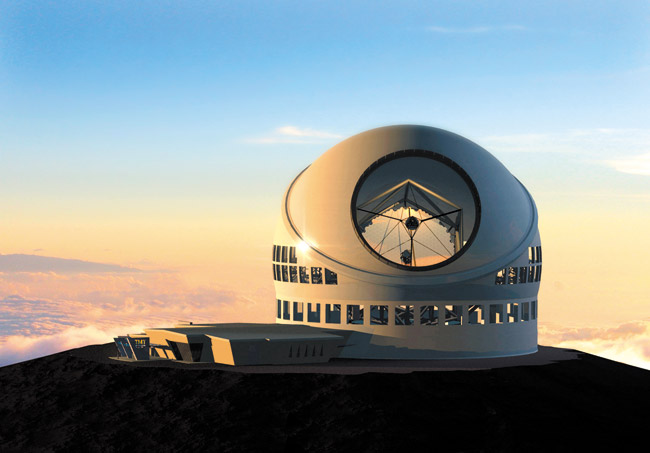Mixed Feelings On Mauna Kea Scope
I first saw Mauna Kea on a late summer morning in 1966. It was a spectacular Hawaiian day, nothing but sunshine, blue sky and Mauna Kea, all 13,796 feet of it.
For a 22-year-old kid born and reared in Indiana (highest point, Hoosier Hill at 1,257 feet) and Michigan (Mount Arvon, 1,979 feet), Mauna Kea impressed. The adjectives beautiful, majestic and awe-inspiring come to mind. It was a moment I will never forget.
Giant Telescope
I’m not a spiritual man, but Mauna Kea on that morning might have made me one. Memory of it certainly helps me understand how a voyaging people from the South Pacific must have felt when they saw the mountain emerge on the horizon, growing larger and larger as they neared.
Then to live in Mauna Kea’s shadow for millennia and to witness volcanic eruptions creating new land on its flanks, how could Hawaiians not have made it part of their cosmology, part of their creation story, and come to feel sacred its pristine pinnacle?
I remember another view of Mauna Kea, this time from Waimea town. It’s again bathed in morning light and the day again belongs to sunshine and blue sky. But four decades have passed since I had first seen the mountain. Pristine no longer described its summit.
It gleamed with astronomical observatories. I don’t remember feeling any sense of the mountain’s desecration. Rather, I felt a sense of pride. Hawaii, now my home, could claim Mauna Kea as the best place on Earth to study the heavens.
Why? Because, according to Keck Observatories, “no nearby mountain ranges roil the upper atmosphere, few city lights pollute the night skies, and most of the year the atmosphere is clear, calm and dry.”
So the astronomers came. In 1969, University of Hawaii saw first light on the mountain with a 0.9-meter telescope.
In astronomy, size matters. Since 1969, six ever-larger telescopes have found their way to Mauna Kea: a 2.2-meter telescope now used by UH faculty and graduate students; NASA’s 3.0-meter infrared telescope; a 3.6-meter scope built by Canada, France and Hawaii; the 8.1-meter Gemini telescope run by a consortium of seven countries; Japan’s Subaru telescope at 8.3 meters; and the W.W. Keck Observatory’s two 10-meter scopes operated by Caltech and UH.
So when completed, the Thirty Meter Telescope will become the “biggest and baddest” on the mountain.
Its opponents decry its size, 18 stories high, and its footprint, six football fields.
I have a feeling that, should I get another, post-TMT look at the summit, I too might feel it desecrated.
Ten days ago, Dr. Lilikala Kame‘eleihiwa compared the TMT to the Hokulea’s 16-day voyage to Tahiti, accomplished with only mental star charts to guide the navigators: “This is science,” she said of Hokulea’s voyage. “They didn’t need a gadget on top of the mountain. We use our eyes. We use our minds. We use our ancestral wisdom. We don’t need to have another observatory and waste money.”
Perhaps not, but the TMT is no gadget. It’s scientists doing what they always do in laboratories and libraries, under the sea and on mountain tops. They seek to expand our knowledge and understanding.
That requires courage to pursue the unknown with the best technology available, much as Polynesian navigators once did in their double-hulled canoes.
The unknown yielded new homes and Mauna Kea.
dbboylan70@gmail.com






